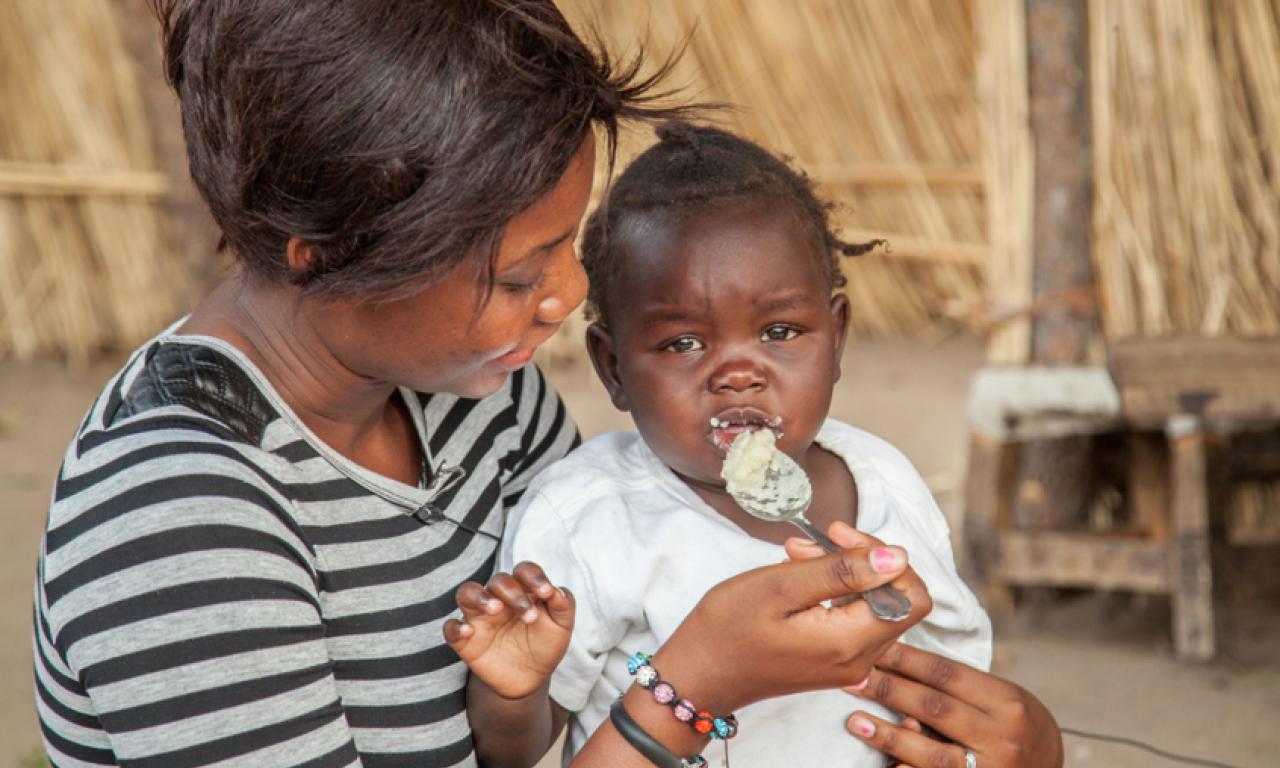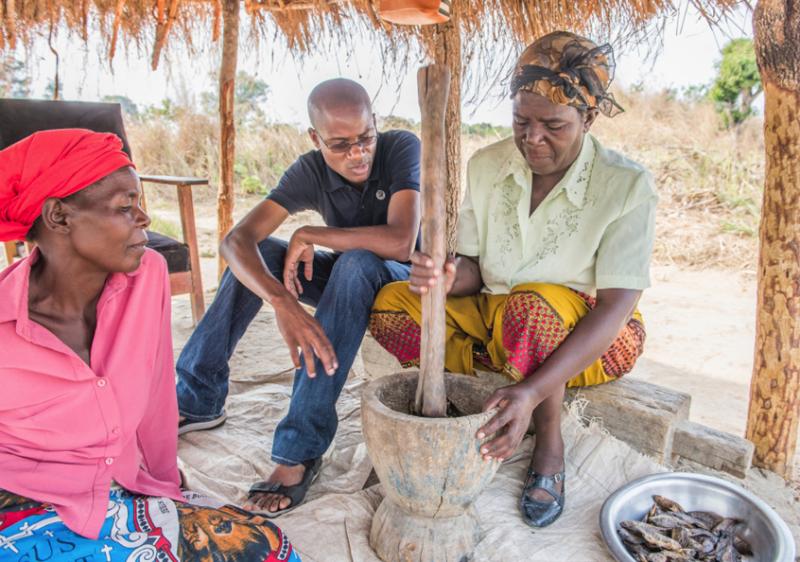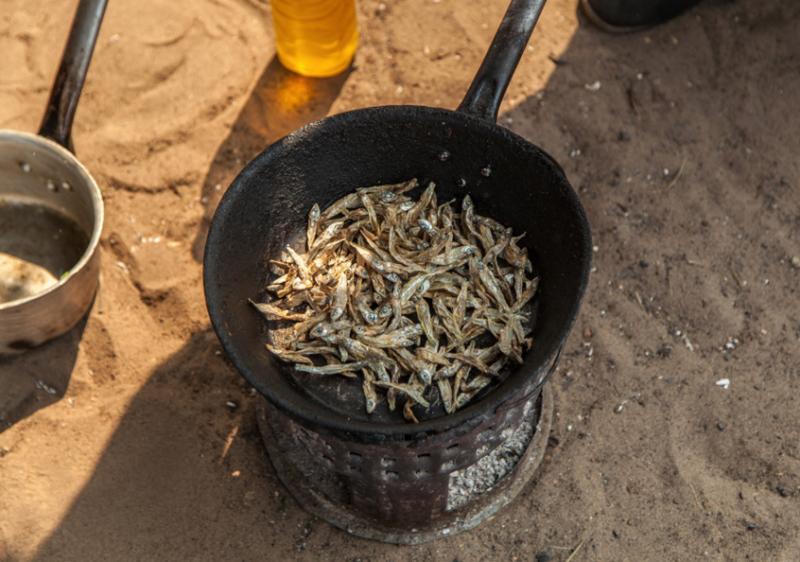
Poor nutrition during the first most critical 1,000 days of a child’s life—from conception through pregnancy and lactation to the child’s second birthday—can result in permanent developmental problems. The Demographic and Health Surveys conducted in Malawi (2015-2016) and Zambia (2013-2014) show that 37 percent and 40 percent respectively of children under five years of age suffer from stunting, which results from chronic malnutrition.
Recommended publications
- Fish-based recipes: Promoting the consumption of nutrient-rich small fish species in Zambia
- Fish for food security and improved nutrition: Rich in calcium, iron, zinc and vitamin A
- Nutritional and health value of fish: The case of Cambodia
Poor nutrition during the first 1000 days of a child’s life—from conception through pregnancy and lactation to the child’s second birthday—can result in permanent developmental problems. The Demographic and Health Surveys conducted in Malawi (2015-2016) and Zambia (2013-2014) show that 37 percent(Download Below) and 40 percent(Download Below) respectively of children under five years of age suffer from stunting, which results from chronic malnutrition.
Although the data focuses on women of child-bearing age, due to the importance of good nutrition during fetal development, much of the population in these countries suffers from a low intake of micronutrients as a result of diets heavily dependent on staple plant foods (mostly maize). Some common micronutrient deficiencies are iron and vitamin A, which could result in anemia and night blindness, and zinc deficiency, which contributes to stunting and can manifest itself in the form of severe diarrhea and may even be fatal.

As research has shown that fish is usually consumed only by adults, WorldFish and partners are working with selected communities in northern Malawi and northern Zambia to improve the quality and diversity of diets for all family members, through the creation of innovative and locally acceptable, nutrient-rich fish products. Small fish species are dried and turned into a powder, using simple processing methods (mortar, pestle and sieve) to fortify local recipes. Fish powder is especially useful for inclusion in the diets of young children, beginning with complementary feeding at six months of age.
Fish are rich in vitamin B12, calcium, iron, zinc, fatty acids and animal protein, and some small fish are especially rich in vitamin A. When consumed as part of a meal, fish can increase the absorption of iron and zinc from other foods. Essential fatty acids, including DHA (docosahexaenoic acid) and EPA (eicosapentaenoic acid), which are only found in fish, are critical for pregnant and lactating women as well as young children, as they are vital for cognitive development in the first 1000 days.(Download Below)
Incorporating fish powder into local foods
I traveled to northern Malawi and northern Zambia to conduct focus group discussions about locally available foods and food preferences, and to test the acceptability of fish powder through cooking demonstrations and sensory evaluations of dishes prepared from locally adapted recipes using fish powder. More than 100 adults and young children completed sensory evaluations, and high scores for the five categories—taste, color, odor, appearance and overall acceptance—were obtained.
Based on this initial success, the Moravian Church of Zambia invited WorldFish to give a presentation about nutrition in the first 1000 days and conduct cooking demonstrations with 100 women from Zambia and Tanzania from 22-24 September 2017.
With the help of Bemba and Swahili translators, we began with a basic introduction to nutrition and the importance of dietary diversity for people of all ages. We discussed the three food groups—body-building foods, protective foods and energy-rich foods—and categorized local foods into each group. We then defined the first 1000 days, which many of the women understood to be the first 1000 days after the child’s birth, forgetting about the important role of the woman in child development during pregnancy.
Promoting dietary diversity in the first 1000 days
Following the clarification of the definition, we discussed how to ensure good nutrition and dietary diversity for women and young children in this critical time, based on the food groups. The discussions highlighted the severity of low dietary diversity for young children, as women remarked that children are fed only staple plant foods (usually maize), prepared as porridge, and are infrequently fed fish, in the form of broth.
Next, smaller groups were formed and given mortars, pestles, sieves and cooking equipment for the hands-on demonstration of home production of fish powder and preparation of dishes promoted by the National Food and Nutrition Commission of Zambia (NFNC). Two recipes from the NFNC Improved Complementary Foods Recipe Booklet(Download Below) were selected (see below).
Pounding the fish with pestle and mortar was easily understood and quickly completed. The two recipes were copied on to large pieces of paper for the groups to see, although challenges arose with standardized measurements such as a ‘cup’ because cup measures are not used in rural areas. Luckily, I had planned for this and brought a chart for standard conversions. This allowed us to calculate measurements based on a local 500 ml cup, which most households have.

When the cooking was completed, participants were invited to taste each of the two dishes and feed them to children over six months old. The women and children enjoyed the dishes, and many expressed gratitude for their new knowledge of how to process and use fish powder. Women noted that an additional benefit of the fish powder is that it can be ‘hidden’ in dishes to lessen the fishy smell, which was reported to make pregnant women nauseous.
Forthcoming research by WorldFish will include nutrient analyses of fish powders processed using different drying, smoking and powdering methods, as well as appropriate methods and tools to promote the adoption of fish powder, especially in the first 1000 days, at national and community level.
Fish soup
Makes 1 serving
2 tablespoons of palm oil or salad oil
1 tomato, sliced
½ onion, sliced
4 tablespoons of fish powder
2-4 teaspoons pounded leafy vegetables
1 pinch of salt
- Heat oil in a pot and fry tomato and onion for 3-4 minutes
- Add fish powder, vegetables and salt
- Cook for 3-4 minutes
- Feed with soft nshima to the child
Fish porridge (with maize or cassava)
Makes 1 serving
¼ cup of fish powder
1 cup maize meal or cassava meal
4 cups water
2-4 teaspoons shredded/pounded leafy vegetables
1 pinch of salt
Little sugar to taste
- Lightly roast the dried fish for 3-5 minutes before pounding to a powder
- Mix maize or cassava flour with fish powder
- Cook the mixture while stirring
- Add the water, bring the mixture to a boil and cook for 15 minutes
- Add the vegetables and cook for 3-4 minutes
- Add salt and sugar to taste
Download files below